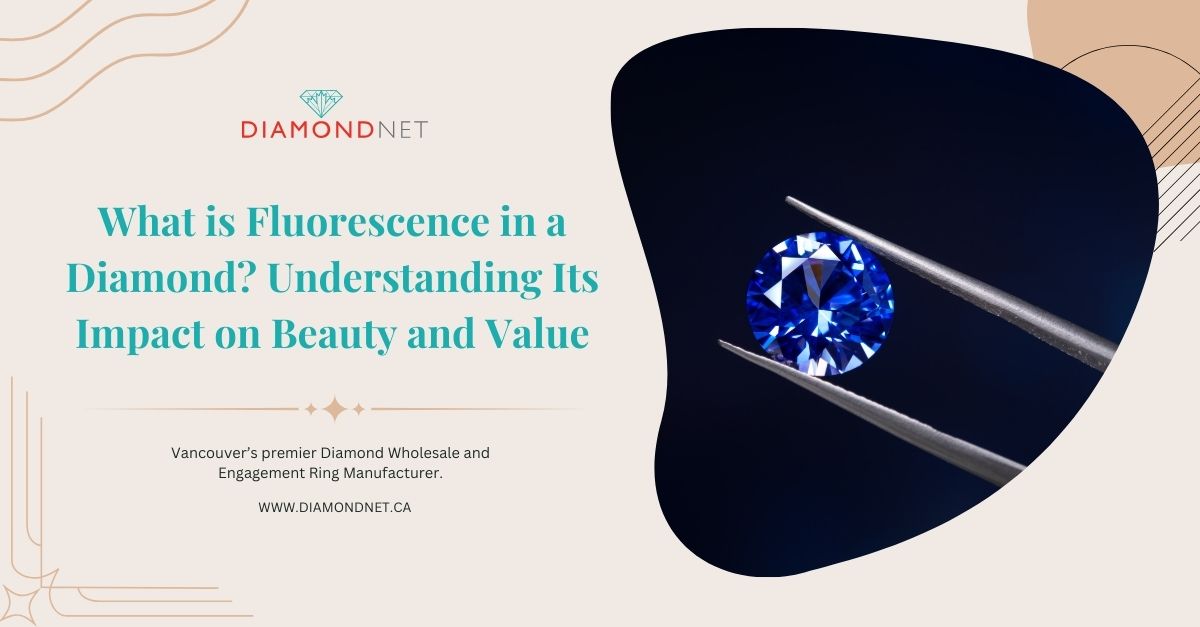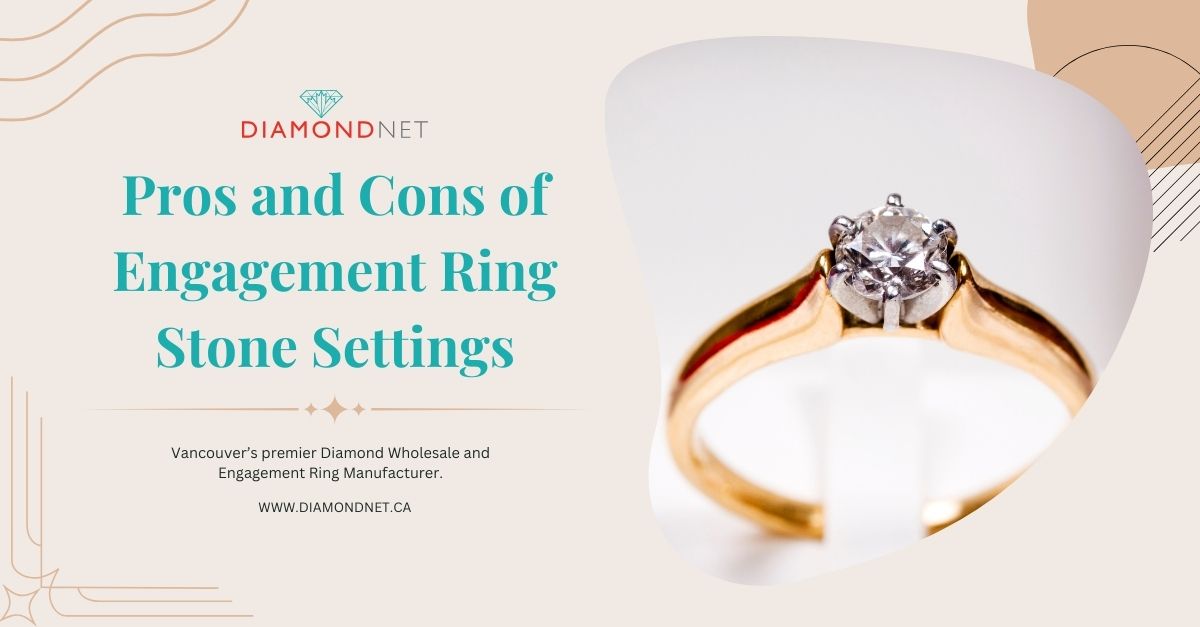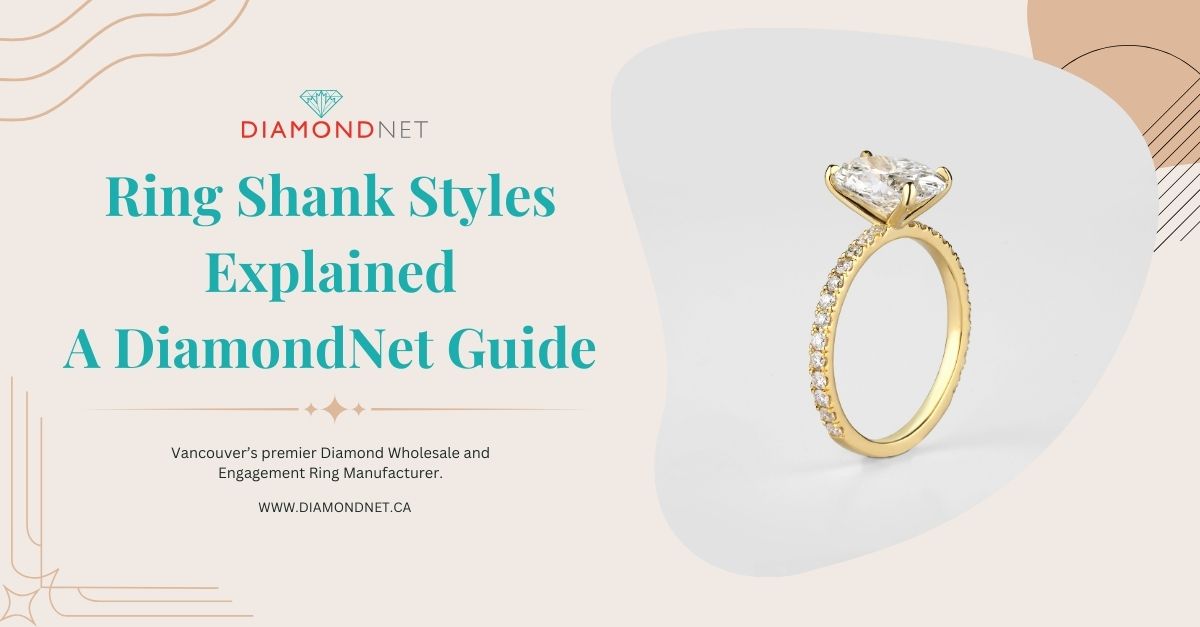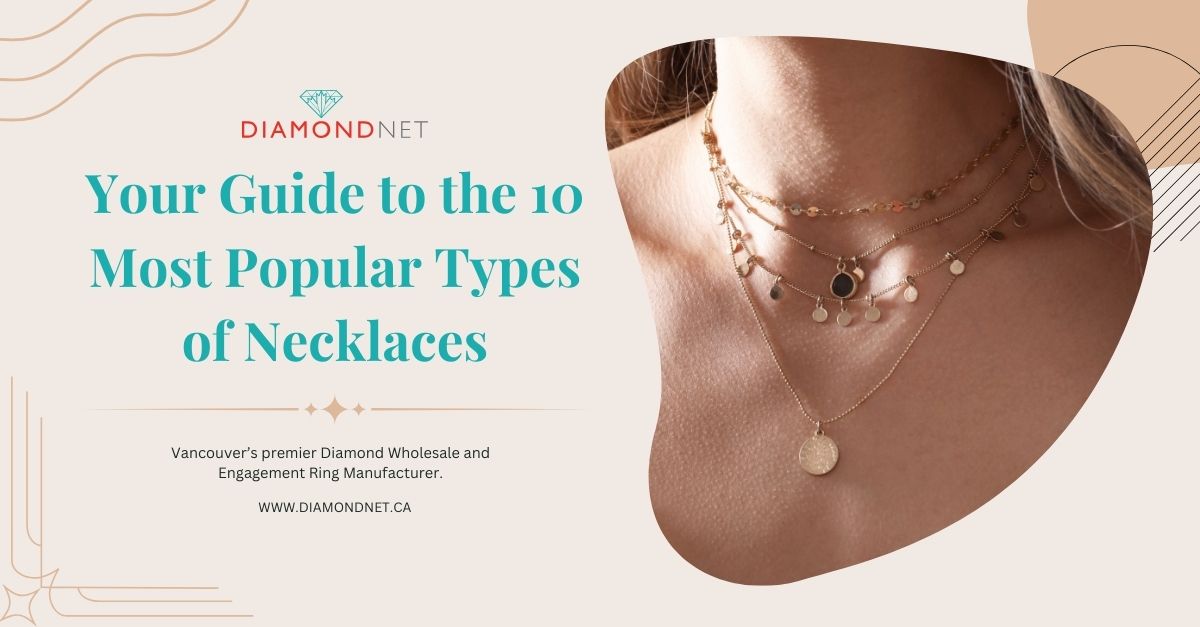When shopping for a diamond, you’ve probably heard of the 4Cs — cut, colour, clarity, and carat. But there’s a lesser-known factor that often surprises buyers: fluorescence.
Fluorescence is a naturally occurring trait that makes some diamonds glow — typically blue — under ultraviolet (UV) light. While it might sound like a flaw, it’s not. In fact, in the right context, it can enhance the beauty or even the value of your diamond.
At DiamondNet in Vancouver, we help clients understand how characteristics like fluorescence impact the look and feel of a stone — and whether it’s something worth considering.
Let’s break it down simply, so you can decide whether fluorescence is something to avoid… or a feature that could work in your favour.
Here is the Quick Answer:
Diamond fluorescence is a natural glow—often blue—that appears under UV light. It’s not a flaw and can even improve lower-colour diamonds by making them look whiter. While strong fluorescence may affect the look and value of D–F colour diamonds, it’s usually invisible and harmless. With the right assessment, fluorescence can offer both beauty and value.
What is fluorescence in a diamond?
Diamond fluorescence refers to the soft glow some diamonds emit when exposed to ultraviolet (UV) light — such as sunlight or black lights. Most of the time, this glow is blue, though in rare cases, it can appear yellow, green, or white.
This natural reaction is often misunderstood, but it plays a role in how a diamond behaves under different lighting conditions. Before deciding whether fluorescence matters for your diamond, it helps to understand where it comes from and how it works.
Here’s what defines diamond fluorescence:
✔ Only visible under UV light: You’ll typically only see it in environments like direct sunlight or under a black light — not in everyday indoor lighting.
✔ Caused by trace elements: Most commonly, nitrogen present during the diamond’s formation gives rise to the glow.
✔ Not a flaw or defect: Fluorescence is a naturally occurring characteristic found in many diamonds and doesn’t indicate poor quality.
How is fluorescence graded?
Fluorescence is graded based on its intensity — how strong the glow appears when a diamond is exposed to ultraviolet (UV) light. This information is listed in most gemological reports, including those issued by the Gemological Institute of America (GIA).
Here are the standard fluorescence grades:
- None: No visible fluorescence under UV light.
- Faint: A very soft glow, barely noticeable.
- Medium: A noticeable glow under UV light, but typically invisible in normal lighting.
- Strong: A clear glow that may slightly affect how the diamond looks in some lighting conditions.
- Very Strong: A powerful glow that can occasionally give the diamond a hazy or milky look.
The most common colour of fluorescence is blue, which often offsets yellow undertones in diamonds. Other colours like yellow, green, or white fluorescence are rare and usually only seen in specific cases.
Tip: Always refer to trusted diamond certifications when reviewing fluorescence. At DiamondNet, we walk you through fluorescence grades and help you view diamonds in different lighting to make the right call.
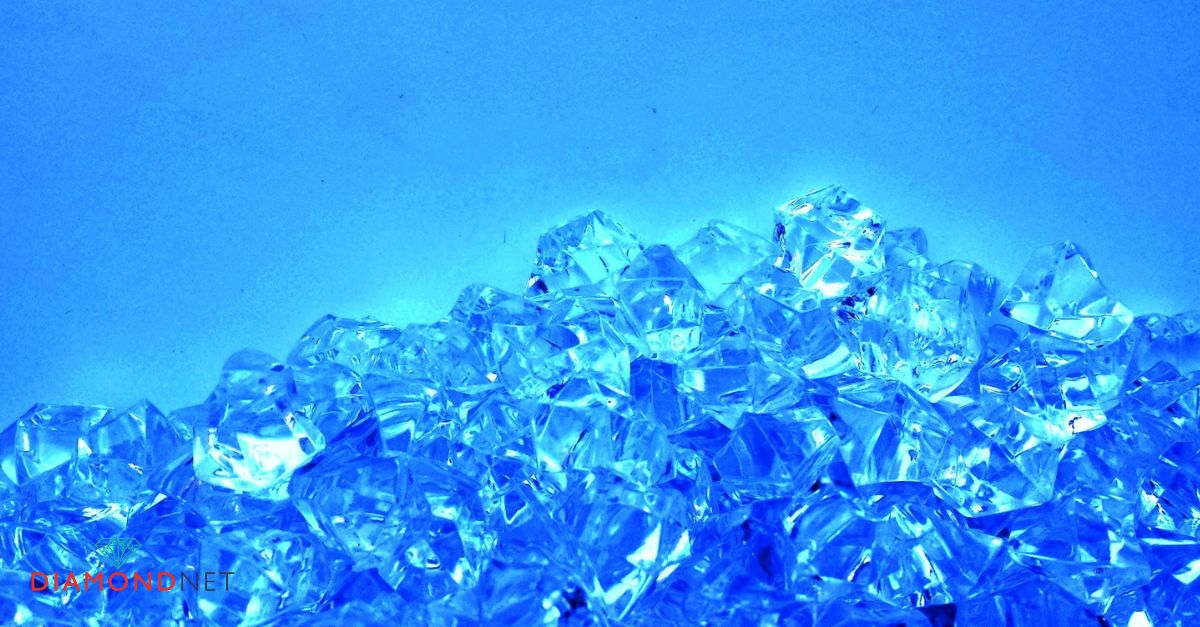
How Common Is Fluorescence in Diamonds
Fluorescence is more common than many buyers realize. In fact, about 25% to 35% of diamonds display some level of fluorescence when exposed to ultraviolet (UV) light.
Blue fluorescence is by far the most prevalent — accounting for over 95% of fluorescent diamonds.1
Other colours, like yellow, green, or white, are much rarer and usually found in select geological conditions.
Key takeaway: If a diamond has fluorescence, it’s not unusual — nor is it automatically a flaw. Its impact depends on the diamond’s colour grade, the strength of the fluorescence, and personal preference.
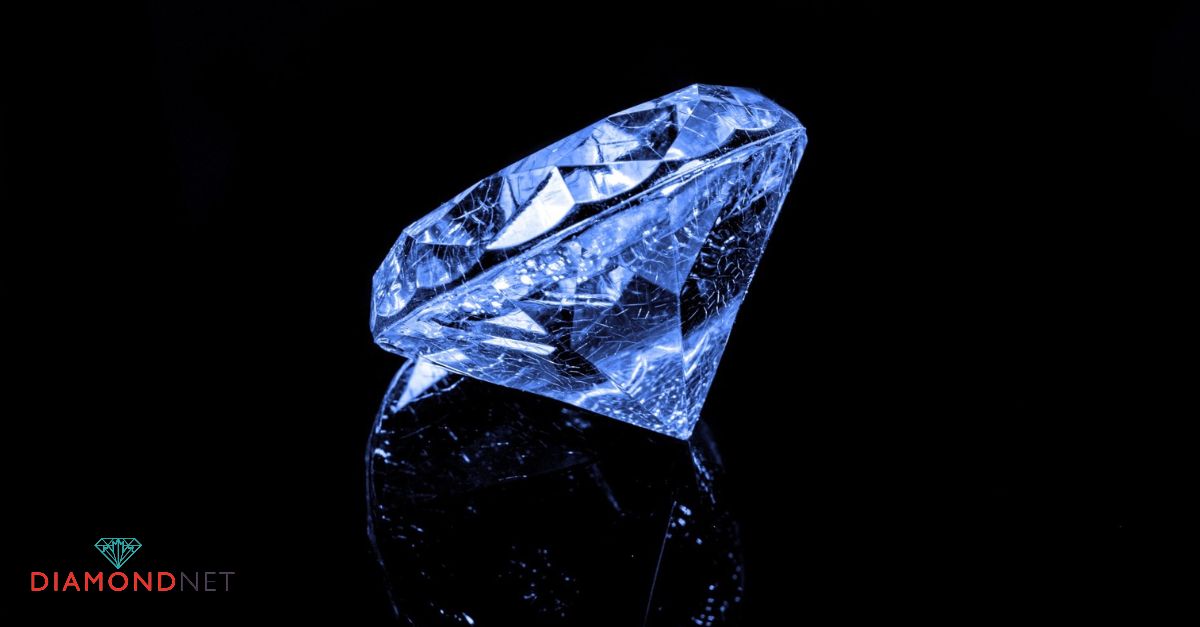
Does fluorescence change how a diamond looks?
In most lighting conditions, the answer is no—fluorescence rarely affects a diamond’s visual appearance. Faint to medium fluorescence is typically invisible to the naked eye and doesn’t alter sparkle or colour. However, there are a few exceptions worth understanding.
Under Normal Indoor Lighting
In everyday environments like indoor settings, natural daylight, or LED-lit spaces, fluorescence usually doesn’t appear at all. Most diamonds—whether they fluoresce or not—look identical under these conditions.
In Rare Cases of Strong Fluorescence
Diamonds with strong or very strong fluorescence may show a slight milky or hazy appearance, especially in D–F colour grades, where clarity and brightness are key. This effect is rare but should be evaluated in person when shopping for a high-colour diamond.
Pro Tip: Always view diamonds with strong fluorescence in natural light and under a UV lamp to check for any visible cloudiness. At DiamondNet’s Vancouver showroom, we provide this side-by-side comparison for transparency and peace of mind.
When It Enhances the Stone
Interestingly, blue fluorescence can make diamonds in the I–M colour range appear whiter, offsetting yellow undertones and improving face-up brightness. In these cases, it’s a helpful feature—not a flaw.
How Fluorescence Can Make a Diamond Look Better
Far from being a flaw, fluorescence can actually enhance a diamond’s appearance—especially in lower-colour grades.
A Natural Brightener for Warmer Diamonds
Diamonds in the I–M colour range often display subtle yellow undertones. When these diamonds exhibit blue fluorescence, the glow can visually neutralize the warmth, making the stone appear whiter and brighter in natural light.
More Beauty, Less Cost
Because some buyers are hesitant about fluorescence, fluorescent diamonds are often priced lower—even when the effect improves their look. This presents a smart opportunity: you get a diamond that looks better face-up at a better price point.
Win-Win for Value-Conscious Buyers
If you’re shopping for a larger diamond and want to stay within budget, choosing a G–M colour diamond with medium to strong blue fluorescence can deliver surprising visual payoff—without sacrificing sparkle or brilliance.
Pro Tip: At DiamondNet, we help clients evaluate whether fluorescence adds or detracts from a stone’s appearance—so you get both beauty and value with confidence.
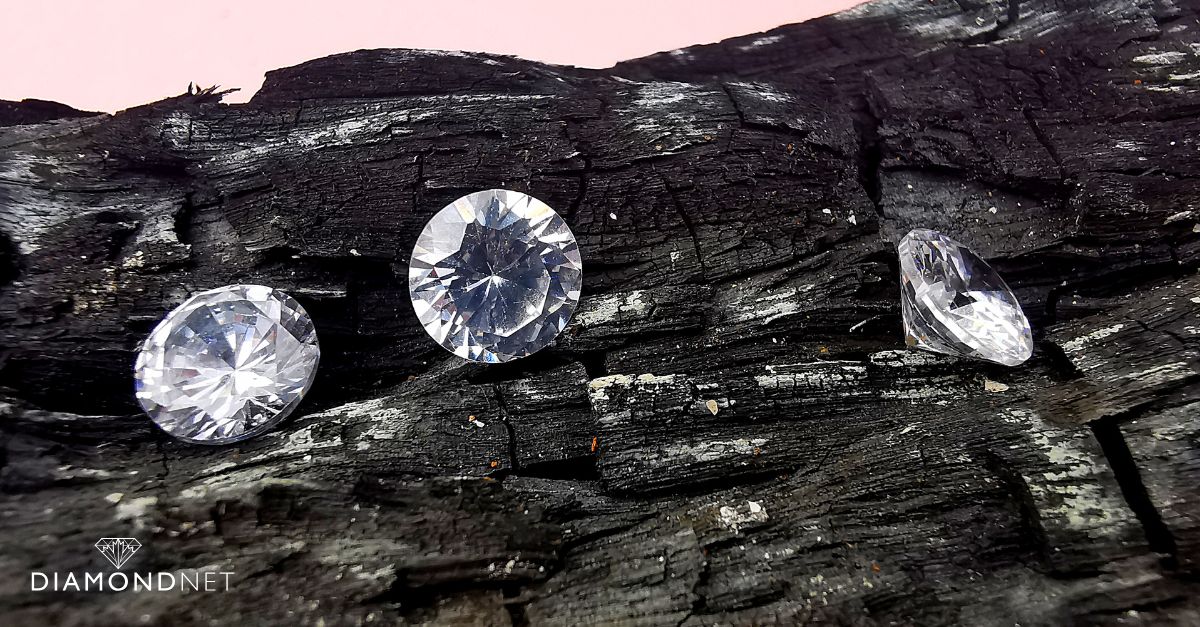
The Impact of Fluorescence on Diamond Value
Fluorescence doesn’t just affect a diamond’s appearance—it can influence its market value, depending on intensity and colour grade.
Colourless Diamonds (D–F): Proceed with Caution
In diamonds with top colour grades, strong to very strong fluorescence can occasionally create a milky or hazy appearance, especially under sunlight or UV-rich environments.
Even when there’s no visible cloudiness, these diamonds may be priced slightly lower, simply due to buyer perception.
Lower Colour Grades (G–M): A Value Advantage
In G–M range diamonds, blue fluorescence can have a neutralizing effect on yellow tones, enhancing the stone’s visual whiteness.
As a result, these diamonds may look visually brighter—yet are often priced more competitively, making them a savvy choice for those prioritizing both budget and beauty.
Certification Transparency Matters
Fluorescence intensity is always listed in GIA and other diamond grading reports. Understanding how this factor interacts with other characteristics helps ensure informed decision-making.
Market Perception Still Varies
Some buyers view fluorescence as a unique feature; others see it as a risk factor. In truth, it’s neither inherently good nor bad—just one more trait to weigh alongside cut, clarity, and colour.
DiamondNet’s View: We help clients assess fluorescence in context—evaluating whether it enhances or detracts from visual performance, based on lighting, colour grade, and personal preferences.
Indoor Visibility of Diamond Fluorescence
Most of the time, you won’t even notice a diamond’s fluorescence—especially indoors.
In typical indoor conditions—LEDs, halogens, or incandescent bulbs—fluorescence is virtually invisible. It doesn’t affect how the diamond looks during dinners, meetings, or everyday wear.
Fluorescence becomes visible only under ultraviolet-rich light sources, such as direct sunlight or black lights (like those used in clubs or glow bowling alleys)
In these environments, a diamond with fluorescence may emit a subtle blue glow, which some find charming or unique.
Bottom line: If you’re not spending your time under UV lights, you probably won’t notice fluorescence at all.
Fluorescence in Natural vs. Lab Grown Diamonds
Fluorescence can occur in both natural and lab-grown diamonds—but the way it appears may differ slightly depending on the diamond’s origin.
Natural Diamonds
Fluorescence is relatively common in natural diamonds. In fact, it can sometimes serve as an authenticity marker, as its presence and pattern are naturally occurring during the diamond’s formation over millions of years. Most fluorescent natural diamonds emit a blue glow.
Lab-Grown Diamonds
Some lab grown diamonds also exhibit fluorescence, but the patterns and intensities may differ due to their manufacturing process. Some lab diamonds show no fluorescence at all, while others may exhibit it under specific UV conditions.
Is One Better Than the Other?
Not necessarily. Fluorescence isn’t an indicator of quality or value by itself. Whether in natural or lab-grown stones, it’s simply one characteristic to consider alongside cut, colour, and clarity.
Expert Tip: If you’re comparing natural and lab-grown diamonds, fluorescence may help experts identify a stone’s origin—but for buyers, it’s mostly a matter of personal preference.
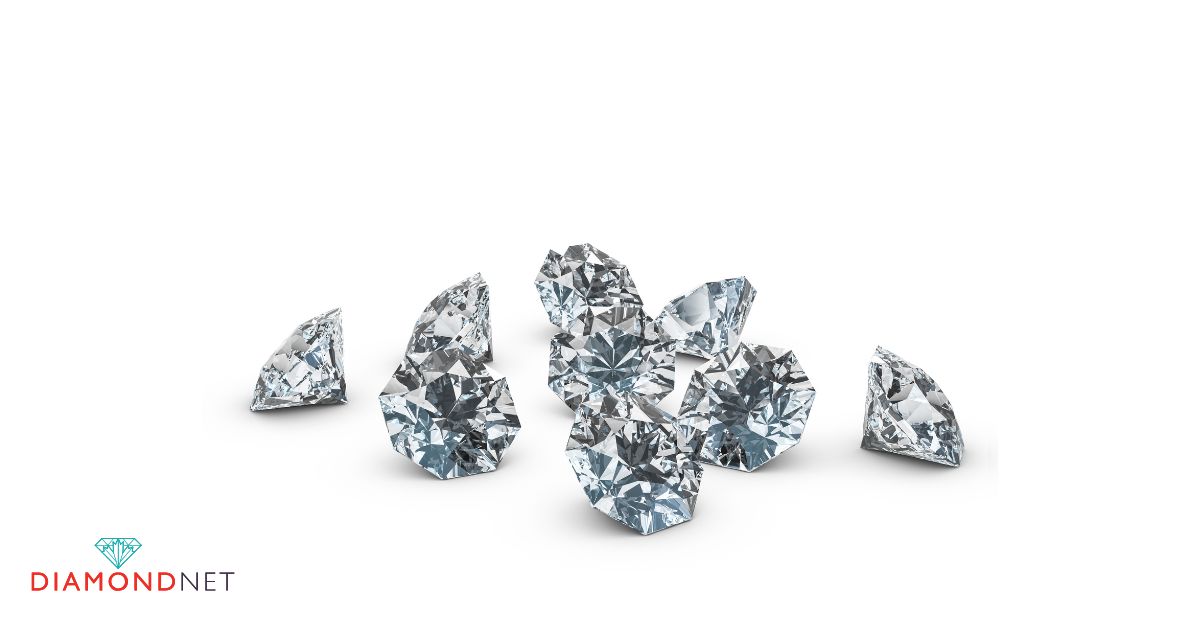
When to Avoid Fluorescence
For most buyers, fluorescence isn’t a dealbreaker. But there are a few scenarios where you might want to pay closer attention:
1. You’re Buying a D–F Colour Diamond
If you’re investing in a high-colour grade (D, E, or F), strong or very strong fluorescence can sometimes create a hazy or milky appearance. This isn’t always the case—but if you’re aiming for a crystal-clear look, it’s worth inspecting the diamond under various lighting conditions.
2. The Fluorescence is Strong or Very Strong
Most diamonds with faint or medium fluorescence look perfectly clean. But in some stones, stronger fluorescence can slightly cloud the appearance. This is rare, but visible in a small number of diamonds.
3. You Can’t View the Diamond In Person
Buying sight unseen? If you can’t evaluate the diamond yourself—or have it examined by a trusted jeweller—it’s safest to choose one with faint or no fluorescence. Even medium fluorescence is usually fine, but it’s best confirmed with professional guidance.
At DiamondNet, we examine every diamond individually and are transparent about whether fluorescence affects its beauty. That way, you get peace of mind along with a diamond that performs exactly as you expect.
Pros and Cons of Fluorescent Diamonds
Fluorescence isn’t inherently good or bad—it depends on the specific diamond and your preferences. Below is a quick summary of how it can help or hinder your buying decision:
|
Category |
Point |
Key Insight |
| Pros | Enhanced Whiteness | Can Make Lower Colour Grades Appear Whiter in Natural Daylight |
| Distinctive Glow | Emits a Blue Glow Under UV Light, Adding Visual Character | |
| Lower Prices | Often More Affordable, Offering Better Value Than Non-Fluorescent Stones | |
| Rarity Factor | Strong Fluorescence Is Uncommon and Can Make a Stone Feel Unique | |
| Cons | Visual Impact | May Cause a Hazy Look Under Certain Lighting (Especially in D–F Grades) |
| Buyer Misconceptions | Some Misunderstandings Persist, Affecting Resale Confidence | |
| Variable Effects | Appearance Can Shift Slightly Depending on the Lighting Conditions |
What We Think About Diamond Fluorescence at DiamondNet
Fluorescence is often misunderstood—but in practice, it’s a natural, value-shaping trait that can benefit many buyers when evaluated correctly.
It can enhance lower-colour diamonds (I–M) by making them appear visibly whiter in daylight, often without a noticeable downside.
It may offer excellent value—fluorescent diamonds are sometimes priced lower, even when the effect is invisible to the naked eye.
In rare cases, strong fluorescence can give diamonds a hazy or milky appearance. But these stones are easy to identify with proper evaluation.
At DiamondNet’s Vancouver showroom, we thoroughly assess each diamond for visual performance, not just lab specs. We regularly recommend diamonds with faint, medium, or even strong fluorescence—as long as they meet our clarity and brilliance standards.
We’re committed to full transparency. If fluorescence affects a stone’s appearance, you’ll know before you buy.
Final Thoughts
Fluorescence is neither inherently good nor bad—it’s simply one of many natural characteristics that can influence a diamond’s beauty, value, and price. Its effects vary depending on the stone’s colour grade, strength of fluorescence, and how the diamond performs in person.
For many buyers, especially those shopping in the near-colourless or faint yellow ranges (G–M), fluorescence can offer a subtle visual upgrade and better value. For others seeking top-grade D–F diamonds, it’s worth checking for potential haziness—though such cases are rare.
Ultimately, fluorescence should be viewed in context—not feared or blindly pursued. With expert guidance and an in-person look, you can confidently choose a diamond that’s not only stunning but also aligned with your preferences and budget.
At DiamondNet, we’re here to help you navigate every factor—from cut and clarity to colour and fluorescence—with clarity and transparency. Visit our Vancouver showroom or book a consultation to view certified diamonds up close and make an informed, confident choice.
